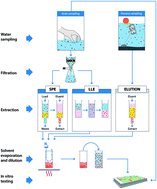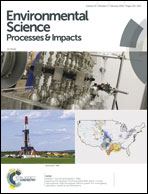In vitro assessment of sex steroids and related compounds in water and sediments – a critical review
Abstract
Detection of endocrine disrupting compounds in water and sediment samples has gained much importance since the evidence of their effects was reported in aquatic ecosystems in the 1990s. The aim of this review is to highlight the advances made in the field of in vitro analysis for the detection of hormonally active compounds with estrogenic, androgenic and progestogenic effects in water and sediment samples. In vitro assays have been developed from yeast, mammalian and in a few cases from fish cells. These assays are based either on the hormone-mediated proliferation of sensitive cell lines or on the hormone-mediated expression of reporter genes. In vitro assays in combination with various sample enrichment methods have been used with limits of detection as low as 0.0027 ng L−1 in water, and 0.0026 ng g−1 in sediments for estrogenicity, 0.1 ng L−1 in water, and 0.5 ng g−1 in sediments for androgenicity, and 5 ng L−1 in water for progestogenicity expressed as equivalent concentrations of standard reference compounds of 17β-estradiol, dihydrotestosterone and progesterone, respectively. The experimental results and limits of quantification, however, are influenced by the methods of sample collection, preparation, and individual laboratory practices.

- This article is part of the themed collection: Bioanalytical tools for water and sediment quality assessment


 Please wait while we load your content...
Please wait while we load your content...